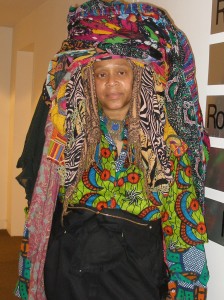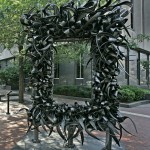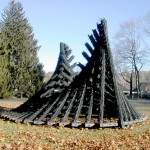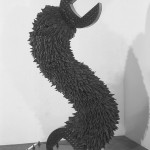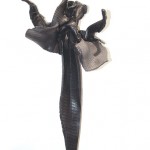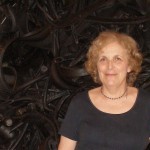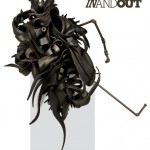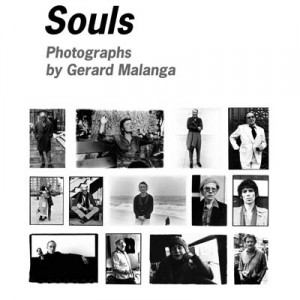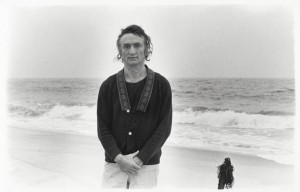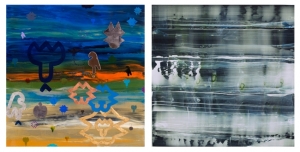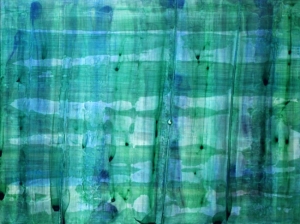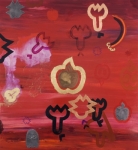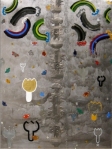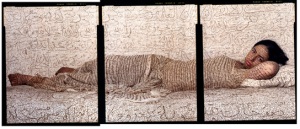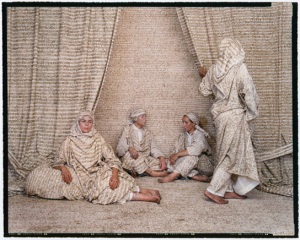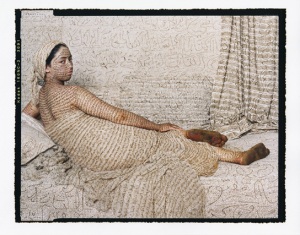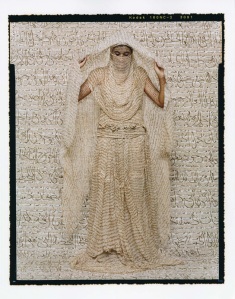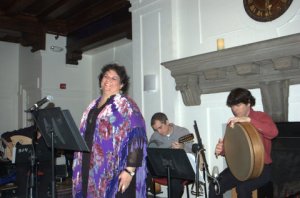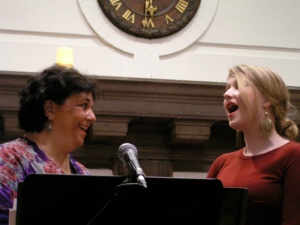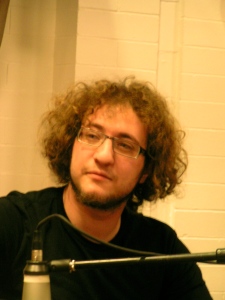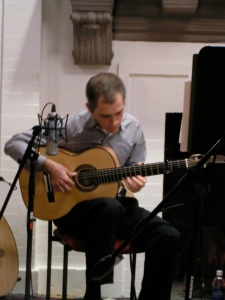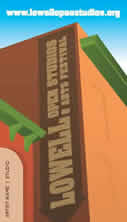Whale of an Exhibit at Williams College Museum
I love the Williams College Museum of Art, in Williamstown, MA.
Yesterday, Sara and I drove over from Albany–and found one wonderful surprise after another.
 First–Tristan Lowe’s Mocha-Dick: a life size white whale made of felt–modelled on a levianthan that once harrassed sailing vessels in the Pacific Ocean and inspired Herman Melville’s 1851 novel Moby Dick. Made out of industrial wool felt, the sculpture appeared at Philadelphia’s Fabric Workshop and Museum in May 2009. It’s accompanied by a film composed of film clips, cartoons, and commentary on whaling–but be warned–it has some gory moments. Both the sculpture and film will be at WCMA through August 8, 2010.
First–Tristan Lowe’s Mocha-Dick: a life size white whale made of felt–modelled on a levianthan that once harrassed sailing vessels in the Pacific Ocean and inspired Herman Melville’s 1851 novel Moby Dick. Made out of industrial wool felt, the sculpture appeared at Philadelphia’s Fabric Workshop and Museum in May 2009. It’s accompanied by a film composed of film clips, cartoons, and commentary on whaling–but be warned–it has some gory moments. Both the sculpture and film will be at WCMA through August 8, 2010.
Then: “The Girl Bends,” an exhibit exploring connections between art and feminism through sculpture, video, photography, and prints since the 1960s. 
The exhibition features over 20 objects from the museum’s collection, including work by Lynda Benglis, Patty Chang, Ed Kienholz, Glenn Ligon, Ana Mendieta, Niki de Saint-Phalle, Carolee Schneemann, Kiki Smith, and Nancy Spero. This Girl Bends also highlights Kerry Stewart’s sculpture of carved crayons by the same name, just above. Through Dec. 12, 2010.
Then, onto the fabulous Photography at the Frontier of Physics and Art, featuring the photos of Eadweard Muybridge, Harold Edgerton, Berenice Abbott, and Man Ray. Each of these photographers broke new ground in using photography to better understand physics–and emerged with astonishingly beautiful works of art.

Muybridge’s photos, in the 19th century, were forerunners of motion pictures–totally graceful horses; Edgerton used strobe lights to capture instants in motion (the shattering of a light bulb) for example; Abbot captured light and motion in lab experiments, bubbles, Man Ray experimented with objects on photosensitive paper–all inspirational and a bit daunting to me, as a photographer myself. Through Dec. 12, 2010.
Check the Museum Website at http://www.wcma.org/exhibitions/additional_current_exhibitions.shtml for information about additional exhibits, directions, curators and closing dates–and do get there if you can! Admission is free but I’m sure that donations and gift shop purchases would be appreciated.
—Anita M. Harris
New Cambridge Observer is a publication of the Harris Communications Group of Cambridge, MA. We also publish Harriscom blog and Ithaca Diaries blog.
